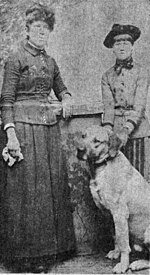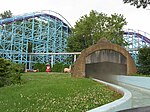Witmer's Tavern
1773 establishments in PennsylvaniaBed and breakfasts in PennsylvaniaBuildings and structures in Lancaster County, PennsylvaniaCommercial buildings completed in 1773Hotel buildings completed in 1773 ... and 2 more
Hotel buildings on the National Register of Historic Places in PennsylvaniaNational Register of Historic Places in Lancaster County, Pennsylvania

Witmer's Tavern, is an historic structure that is located in East Lampeter Township, Lancaster County, Pennsylvania, just east of U.S. 30 on Old Philadelphia Pike. This building known as Witmer's Tavern should not be confused with the other Witmer's Tavern more commonly known as the Conestoga Restaurant or Conestoga Inn that is located on Route 462 at Bridgeport just east of Lancaster City. This building was listed on the National Register of Historic Places in 1978.
Excerpt from the Wikipedia article Witmer's Tavern (License: CC BY-SA 3.0, Authors, Images).Witmer's Tavern
Old Philadelphia Pike, East Lampeter Township
Geographical coordinates (GPS) Address Nearby Places Show on map
Geographical coordinates (GPS)
| Latitude | Longitude |
|---|---|
| N 40.039722222222 ° | E -76.241944444444 ° |
Address
Old Philadelphia Pike 2020
17602 East Lampeter Township
Pennsylvania, United States
Open on Google Maps







